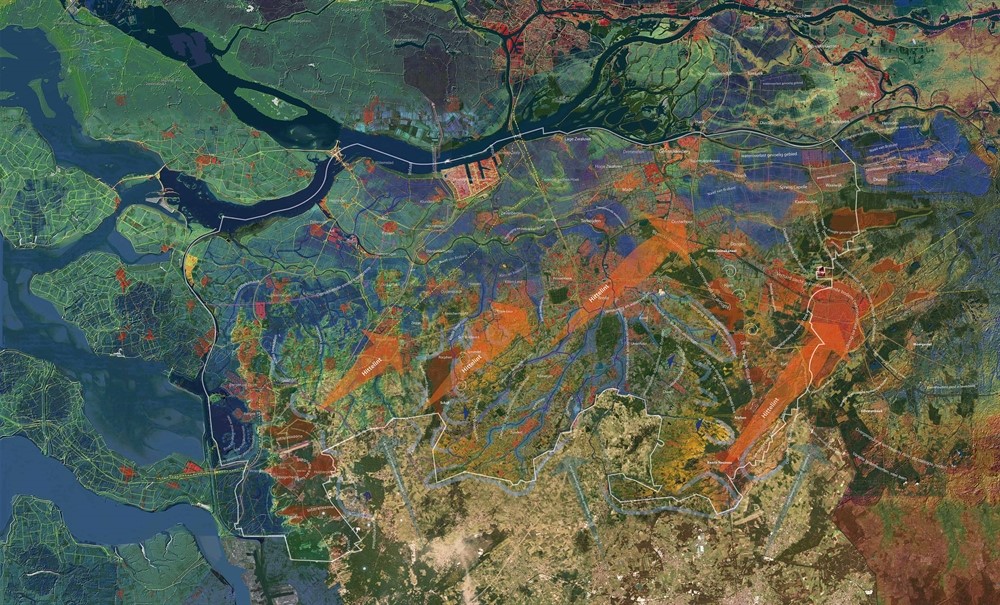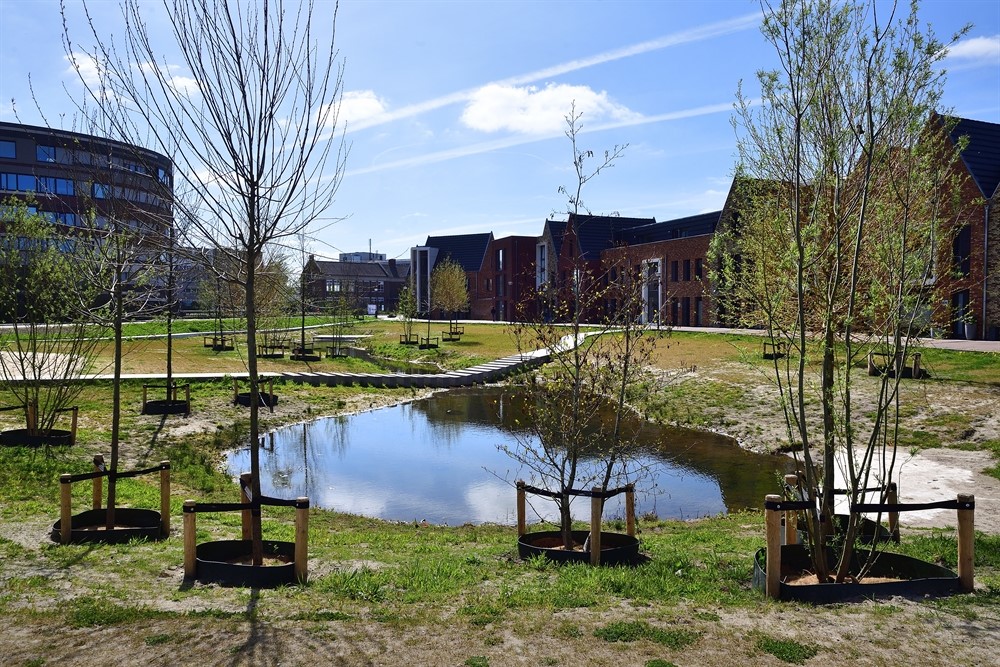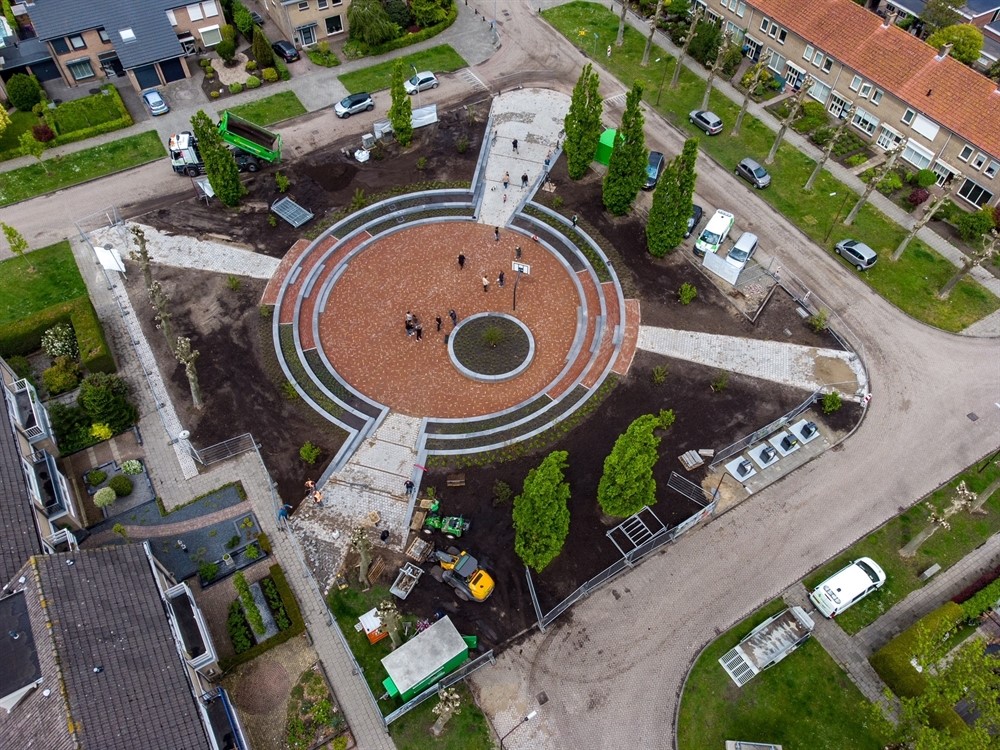Regional implementation agenda for Waterkring West collaborative
On 22 October 2021, the Waterkring West-Brabant collaborative adopted a regional climate adaptation strategy and implementation agenda. This sets out how the municipalities of Bergen op Zoom, Halderberge, Moerdijk, Roosendaal, Steenbergen, and Woensdrecht; the Brabantse Delta district water board; and the Brabant Water and Evides water companies intend to climate-proof the region. The strategy and the implementation agenda are contained in a single document. This page deals with the contents of the implementation agenda. The strategy is discussed on a separate page.
How have the strategy and the implementation agenda been developed?
The Waterkring West collaborative comprises the municipalities of Bergen op Zoom, Halderberge, Moerdijk, Roosendaal, Steenbergen, and Woensdrecht; the Brabantse Delta district water board; and the Brabant Water and Evides water companies. These parties have decided to collectively elaborate, at the regional level, the ambitions set out in the Delta Plan on Spatial Adaptation. To this end, they embarked on a “Climate Journey” in 2019: a type of risk dialogue. During this climate journey, they collectively explored the climate taskings at issue in the region, linking them to regional trends and developments. The outcomes of this analysis have been visualised in local and regional climate maps.

What goal does the implementation agenda pursue?
The implementation agenda sets out the regional actions and projects that Waterkring West intends to carry out in the period up to and including 2027. The implementation agenda paints a more concrete picture of the ambitions and the strategy, in order to clarify which party will be doing what and when to realise the plans set out in the strategy. Based on their collective “Climate Journey”, the parties have decided to approach the actions and projects set out in the implementation agenda on the basis of five themes:
- Productive industrial estates and work locations
- Pleasant rural centres, cool villages and cities
- Resilient forests
- Elevated sandy soils: watery brooks and sources
- Clay soil: water collection, distribution, and purification in and along rivers and creeks
Projects focused on climate-adaptive industrial estates
This region features many large-scale industrial estates and other work locations. Many of these estates are largely paved. This causes heat stress on sunny days, whilst severe precipitation can cause waterlogging. In order to convert these estates into optimally green and climate-proof locations, the region is sharing as much knowledge as possible with all the parties involved in the industrial estates. To this end, it has joined forces with De Baronie Working Region and the Grote Oogst initiative set up by the province of Noord-Brabant. In addition, it is compiling a pioneer group of industrial estates that hold major ambitions with respect to green-blue taskings.
Projects focused on pleasant and cool villages and cities
Many city and village centres are largely composed of paved surfaces and thus qualify for extensive greening. Greenery has a cooling effect on hot days. In addition, climate change is forcing us to focus more on regional water and soil systems as the point of departure in spatial planning. The Working Region is drawing up a green-blue structural approach to this end. Furthermore, it is embarking on the following projects:
- A collective investment proposal to support municipal plans to pursue green-blue schoolyards;
- Supporting municipalities to involve residents;
- Regional agreements to combat warming of municipal drinking water pipes.

Projects focused on sustainable forests
Forests play an important part in climate adaptation: they retain rainwater and provide cooling. In addition, they absorb CO2, which contributes greatly to slowing down further global warming. As a result of the drought in recent years, the quality of many forests has deteriorated. Furthermore, many forests in the Netherlands are especially vulnerable, because they are largely made up of many similar species. A wider range of different trees is conducive to biodiversity. Together with area managers, the Waterkring West Working Region is pursuing revitalisation and afforestation. Its primary focus in this respect is the Brabantse Wal area. It is also looking into wishes and possibilities in the field of agroforestry: a combination of agricultural systems and forests, which is open to a wide range of options. Its final pursuit involves collaboration with the Security Region and the area managers to develop measures to combat forest fires.
Projects focused on elevated sandy soils
The elevated sandy soils are vulnerable to drought. This is largely due to the fact that the water system was originally designed to discharge water as quickly as possible. Consequently, maximum rainwater retention and storage is vitally important in these upstream areas. That is why the Working Region intends to, inter alia, climate-proof the regional brook valleys. In addition, it is looking into options for utilising larger volumes of purified wastewater, capitalising on the lessons learned from the Bath wastewater purification plant pilot project. Furthermore, it intends to improve farmland soil, by reference to the ambitions set out in the Vital Brabant Soil programme.
Projects focused on clay soils
Climate change is disrupting the water distribution balance in downstream clay areas. The current design of the rivers is focused on water discharge as their main function. However, as a result of climate change, water retention and water storage have become equally important. Riparian areas offer many opportunities for water storage. The Working Region is drawing up a new implementation programme for brook restoration, ecological corridors, and Wet Gems of Nature. Wet Gems of Nature are areas that the provincial authorities have designated as nature reserves in danger of dehydration. The province is working on the restoration of these nature reserves.
Monitoring of the implementation programme
In order to keep track of the progress made with respect to the implementation programme, the Working Region organises annual evaluation meetings to monitor and review the results achieved for each theme and each project. These meetings also address the projects submitted to the Incentive Scheme. Furthermore, at these meetings, the course is set for the year ahead, priorities are established, and the implementation agenda is supplemented where needed.

Lessons to be learned
Some tips from Water- en Klimaatkring West Brabant to develop an efficient strategy and implementation agenda:
- First of all, explore the climate taskings together with all the partners, and consider what other regional taskings could be linked. A major advantage of such an exploration, also referred to as a risk dialogue or collective climate journey, is that all the partners depart from basically the same level when embarking on setting down the strategy and implementation agenda.
- In your implementation agenda, clearly set out what exactly you intend to achieve with your actions: write a promising prospect. Show or describe what the environment will look like once you have tackled the relevant taskings. This will demonstrate the added value of this collective approach.
- Tie in with the requirements and ongoing actions of the participating parties. Thus, they will feel (even more) involved.
- Keep your implementation agenda “manageable”: do not set your ambitions and goals too low, but definitely not too high either. The parties involved must have the feeling that the actions are feasible.
Contact person
Jochiem Hendriksen
TwynstraGudde
jhn@tg.nl
